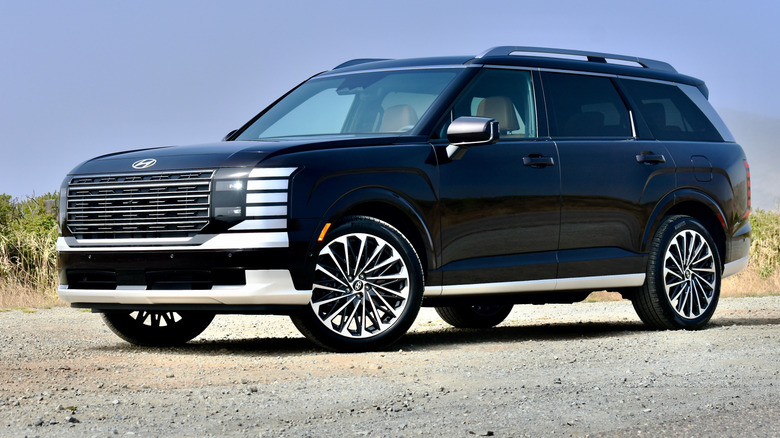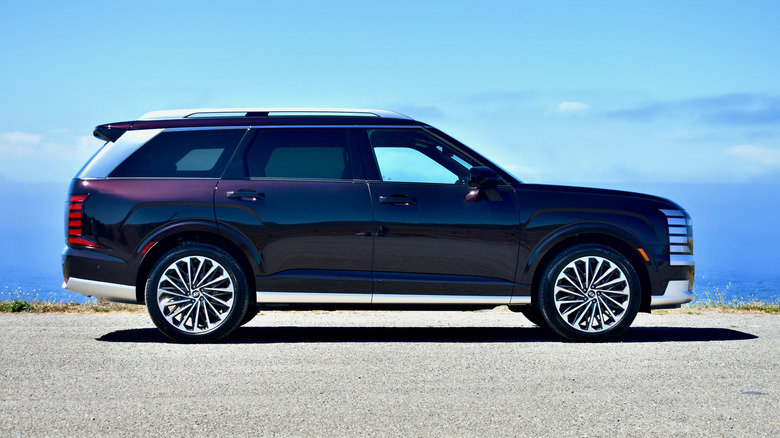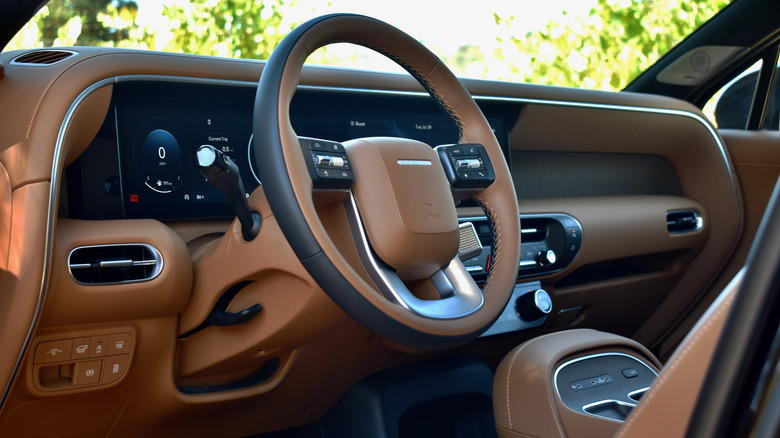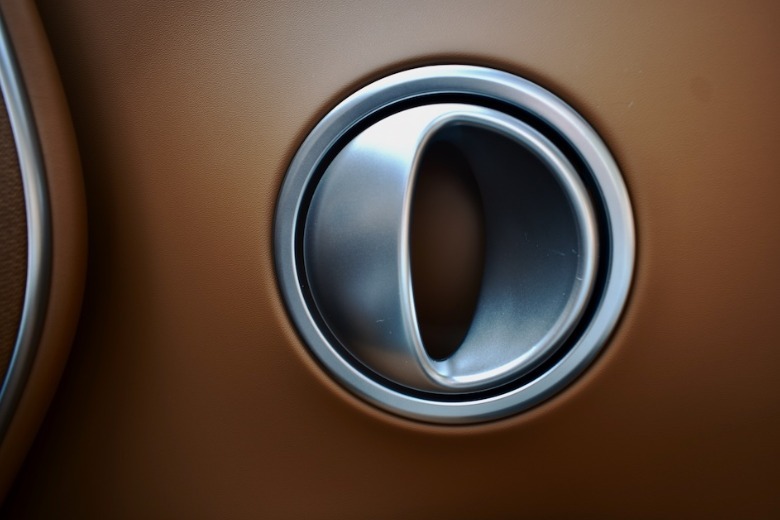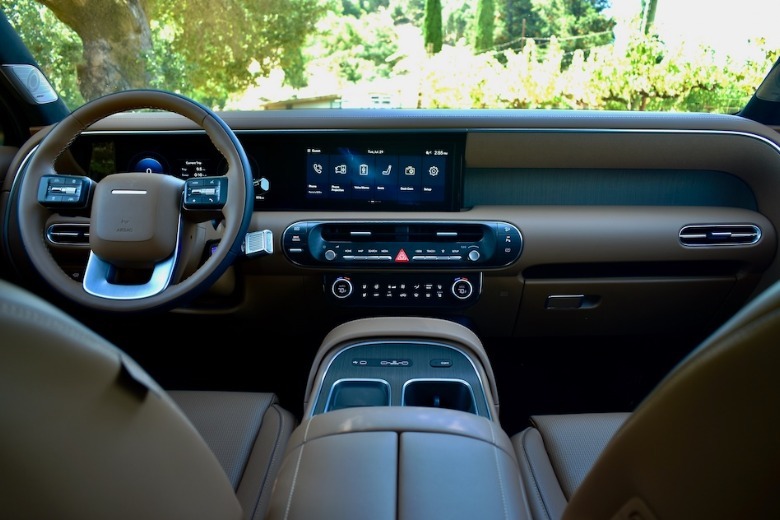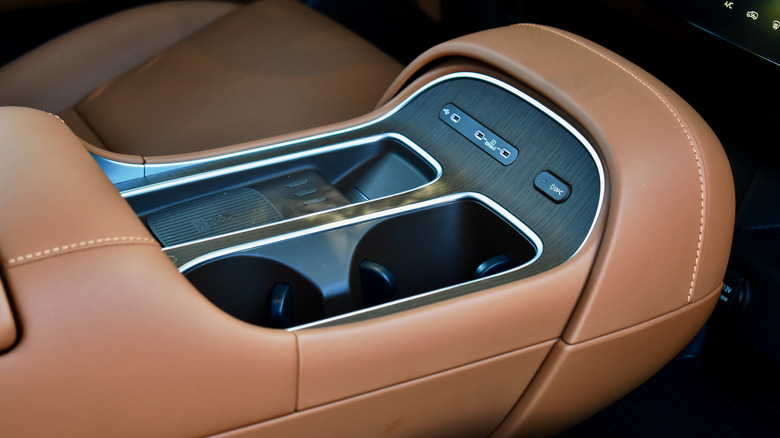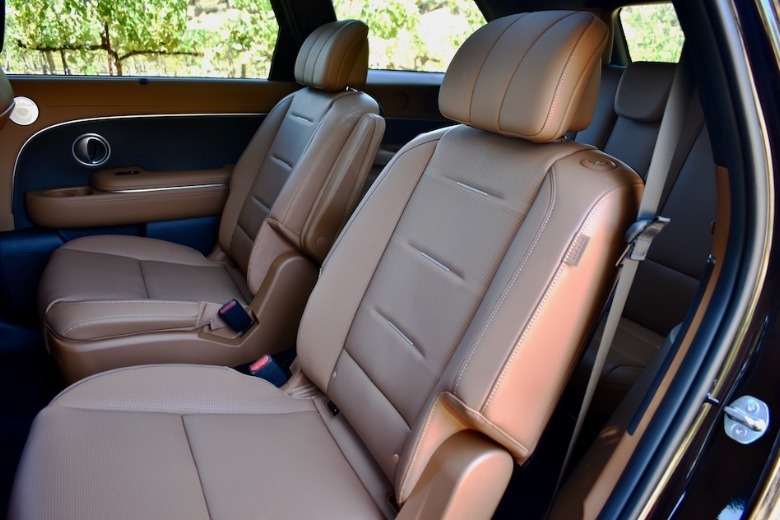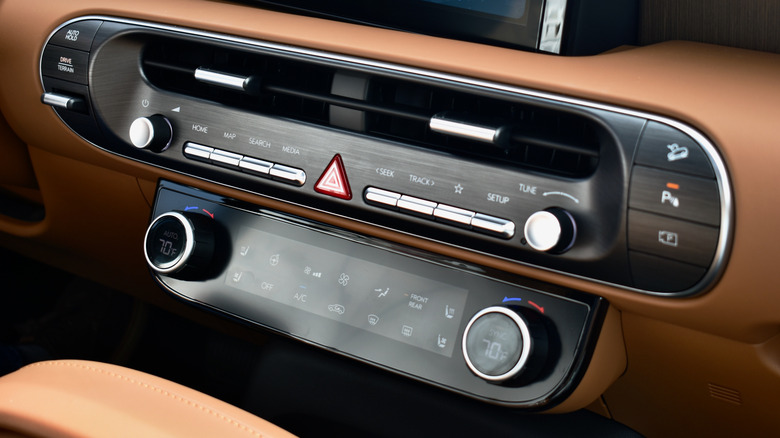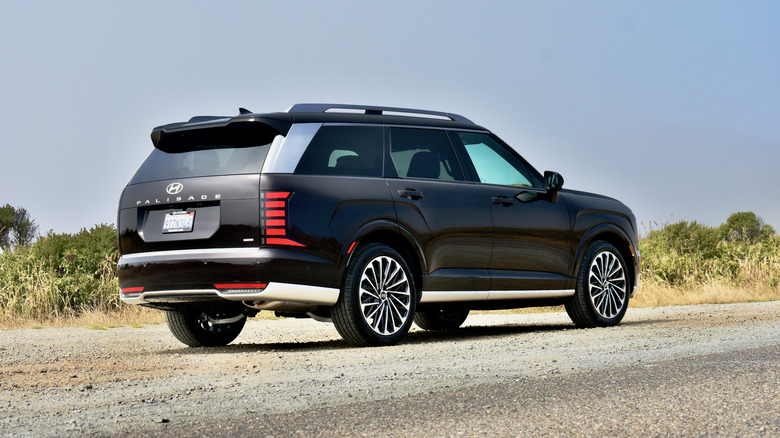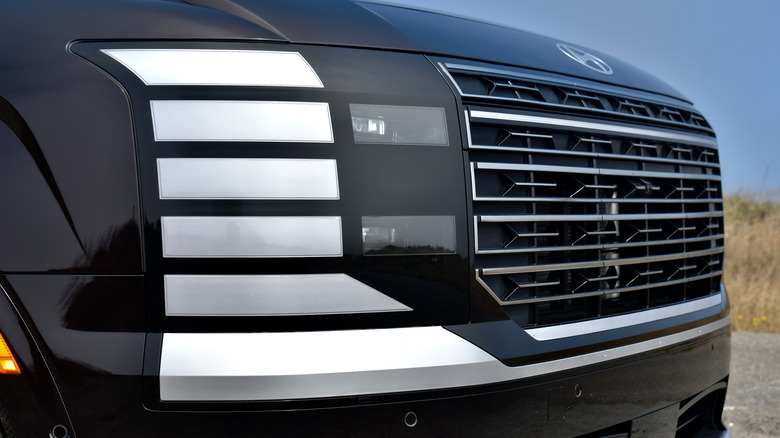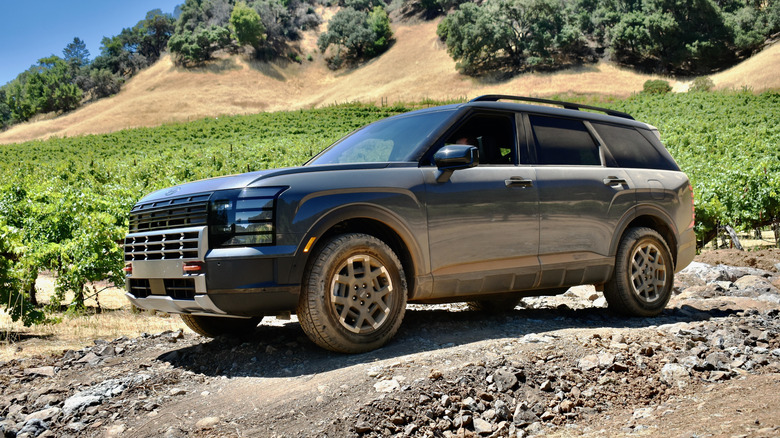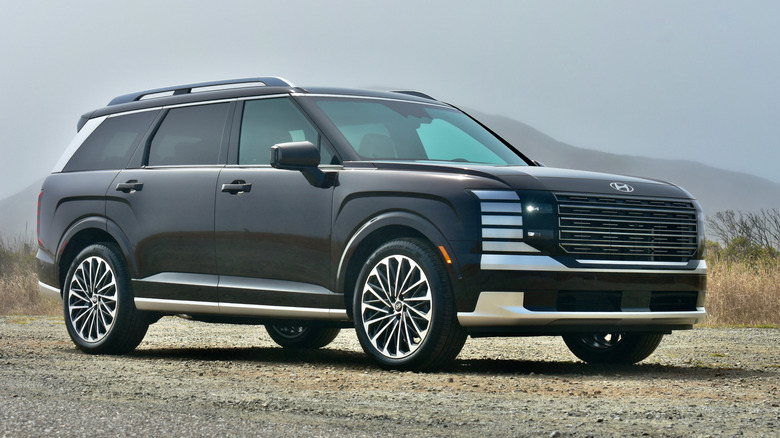2026 Hyundai Palisade First Drive: Reinvented SUV Sees Calligraphy Threaten Luxury Rivals
Hyundai Motor Group may not have poured concrete shoes for all of its rivals just yet, but it's certainly staked out its own territory. And like any mob boss with a profitable hustle, it now faces threats from enterprising upstarts within the family.
When HMG decided to make another attempt at a large three-row SUV for North America, following the disastrous Hyundai Veracruz and Kia Borrego, it let Kia take the lead. The Kia Telluride arrived first to rave reviews, but its platform-mate, the Hyundai Palisade, didn't garner nearly as much attention, in part because of its less-traditional styling.
The parent brand isn't making the same mistake twice. Not only does the redesigned 2026 Hyundai Palisade arrive before the second-generation Telluride, but it copies the Kia's appealing big-box design theme. But is that enough to put the Telluride in its place? And what about the other three-row SUVs—the Santa Fe and Ioniq 9—the new Palisade will share Hyundai showrooms with?
A complete transformation
Like the Santa Fe, the Palisade combines the angular profile of traditional body-on-frame SUVs with a modern crossover architecture. Compared to the previous generation (which debuted for the 2020 model year), the changes are no less thorough. Where the first-generation Palisade is best described as quirky, the second generation looks like the flagship SUV that it is.
Designers applied the usual tricks, shortening overhangs, lengthening the wheelbase (by 2.7 inches), adding boxy creases over the fenders, and applying the obligatory massive grille to make the 2026 Palisade look broader and more substantial. Large vertical daytime running lights and oversized taillights help balance things out, giving the Palisade a stately appearance.
And while it is still based on a platform intended for front-wheel drive, the Palisade also has classy cab-rearward proportions, with a long hood and back windows hunched over the rear wheels. The new model is also 2.5 inches longer, 0.2 inch wider, and 0.6 inch taller than its predecessor.
While it's a similar formula to the Santa Fe, the character is completely different. You won't find any beveled body sides or "H"-shaped lights here, giving the Palisade a more tasteful look that helps sell it as the Santa Fe's more upscale counterpart. Hyundai's Genesis luxury brand will have a hard time topping this one.
Interior contrasts
While the exterior is defined by crisp edges and angles, there's hardly a straight line to be found inside. From the ovoid air vents to the circular door handles, the interior takes the exact opposite approach. Some elements are recognizable from other Hyundai models, such as the Land Rover-esque steering wheel shared with the Santa Fe and Ioniq 9, and a tubular center console similar to the one in the Ioniq, but the Palisade takes things further.
Instead of sitting on top of the dashboard, the Palisade's curved display is nestled within an ovoid enclosure to help cut down on glare. In addition to being functional, it's a nice piece of design that focuses attention on the dash itself, rather than the screen attached to it. And Hyundai even managed this without making the dash too tall or deep.
The curved display and unique design features are standard, but the top Calligraphy trim level adds a few more-luxurious touches like Nappa leather upholstery and a reclining front-passenger seat and second-row seats.
Spacious, but not the most spacious
Passengers will likely care more about space than style, but the Palisade offers plenty of that too. It has more second-row legroom than a Ford Explorer, Honda Pilot, or Toyota Grand Highlander, as well as comparable headroom. Third-row headroom is a bit tighter than in the Ford or Honda, however, and the Palisade only surpasses their third-row legroom if you slide the seats all the way back, eating into cargo space.
Speaking of cargo space, the Palisade trails the Grand Highlander whether you're looking behind the first, second, or third rows of seats, but it's a closer match to the Explorer and Pilot. Accessing all that space is also easy thanks to one-touch power-folding seats (the third row's sliding mechanism is powered as well). Hyundai even included two buttons on the second-row seats—one on the back and one on the bottom cushion—ensuring they're easy to reach whether the seats are folded or upright.
However, the Palisade is also a case of diminishing returns. Rear-seat passengers will find about the same headroom and legroom as in a Hyundai Ioniq 9 or Santa Fe, and while the Palisade does have more cargo space than the Santa Fe, the Ioniq 9 has an additional 2.8 cubic feet behind its third row. And you can expect the Kia Telluride to offer similar space with its next redesign.
Cameras galore
The Palisade's dual 12.3-inch screens—one serving as the instrument cluster, the other as the infotainment touchscreen—also aren't any bigger than in other Hyundai models, but they're also no less usable. Hyundai now supports wireless Apple CarPlay and Android Auto regardless of head unit, and a healthy complement of analog controls means you won't have to tap out of those features to reset the climate control.
Other highlights include 100-watt USB-C ports for charging—which is good, because using Android Auto nearly drained our test phone's battery during a day's drive—a UV-light sterilizer for devices, and a built-in dash cam. It can record video from front and rear views while driving or parked, which is stored locally on an SD card. Speaking of cameras, a digital rearview mirror (very helpful with passengers in the rear seats) and Hyundai's excellent blind-spot monitor are also available.
What isn't available is a hands-free driver-assist system equivalent to the Ford Explorer's BlueCruise system or the Super Cruise system available in the Chevrolet Traverse and GMC Acadia. Hyundai's Highway Driving Assist 2 is a step behind, even though the Palisade is laden with enough sensors to enable Remote Smart Parking Assist automated parking.
Hybrid can't come soon enough
For 2026, the Palisade continues with a naturally-aspirated V6 engine as standard equipment. However, displacement decreases from 3.8 liter to 3.5 liters, while output drops slightly to 287 horsepower (-4 hp) and 260 pound-feet of torque (-2 lb-ft). That's not exactly noticeable, though, and it's still comparable to the non-turbocharged V6 engines in other SUVs. It also gives the Palisade a 5,000-pound towing capacity that's also in line with market-segment expectations.
Hyundai sticks with standard front-wheel drive, optional all-wheel drive, and an eight-speed automatic transmission. But even with that ample selection of gears, the V6 seemed to have trouble finding its rhythm on our test route, which consisted mostly of hilly, twisty roads in California's famed Napa Valley. Despite seemingly adequate power, the engine felt like it was working quite hard most of the time. And acceleration away from a stop was far from snappy.
The amount of effort needed to move the Palisade is reflected in its fuel economy. Hyundai estimates 20 mpg combined for all-wheel drive models—just two mpg better than a twin-turbo V8 Range Rover—and 21 mpg combined for front-wheel drive models. We struggled to achieve even that, so it's a good thing a Palisade Hybrid is scheduled to arrive later this year. It will use a 2.5-liter turbo-four engine and a pair of electric motors mounted in a six-speed automatic transmission to develop 329 hp and 339 lb-ft of torque. Hyundai is targeting over 30 mpg.
Quiet, but clumsy
The previous-generation Palisade wasn't exactly unpleasant, but Hyundai made additional efforts to tame noise, vibration, and harshness—the unholy trinity of automotive engineering—with this redesign. The new Palisade features more sound-absorbing material, thicker glass, and standard acoustic glass on the windshield and front windows (some models get it on rear windows as well).
These improvements gave the Palisade interior quietness comparable to vehicles from Hyundai's Genesis luxury brand, and the plush suspension (with standard rear self-leveling) added to the luxurious feel in steady-state cruising. However, the Palisade's composure started to erode in corners, as the soft suspension and this SUV's large size inhibited body control. The on-road portion of this first drive was also done in a Calligraphy model, which has 21-inch wheels that were detrimental to ride quality, while also producing excessive tire noise.
Precise steering at least ensured the Palisade didn't feel as big as it looked. It was to get it set up for corners, and the steering responded promptly when small inputs were needed for overtaking or making room for cyclists. The brakes—which feature larger rotors for 2026—were also impressively easy to modulate, helping keep the Palisade's weight under control when decelerating. That's all one can expect in a big SUV designed for road-trip comfort.
XRT Pro provides requisite ruggedness
Because seemingly every vehicle needs a diet off-road variant, the Palisade XRT Pro joins the lineup for 2026. It has a 1.0-inch suspension lift creating 8.4 inches of ground clearance, improved approach, breakover, and departure angles, an electronic limited-slip rear differential, terrain-specific drive modes, hill-descent control, and all-terrain tires on 18-inch wheels.
All of that hardware is wrapped in more rugged styling, which ditches the other Palisade models' brightwork but adds red recovery hooks. Inside, the XRT Pro gains an off-road page with pitch-and-roll, compass, and elevation displays for its touchscreen, but otherwise the leatherette-upholstered interior is fairly nondescript.
The XRT Pro still has slightly less ground clearance than a standard Subaru Ascent, but more than some off-road models like the Chevrolet Traverse Z71 and Nissan Pathfinder Rock Creek. It had no trouble negotiating a small off-road course set up by Hyundai, but we suspect a stock Palisade wouldn't have had too much trouble on most of it, the exception being some moguls that the average XRT Pro owner is unlikely to encounter.
Like some other off-road models, the XRT Pro can also leverage its surround-view camera system to show a low-angle view at the front of the vehicle (Hyundai calls it "forward ground view"). That's very helpful for seeing what's directly in front, but Hyundai didn't include a way to defeat the camera's 5-mph speed limit (a federally-mandated feature for on-road use) when off-roading.
2026 Hyundai Palisade verdict
At launch, pricing ranges from $40,430 (including a $1,495 destination charge) for a front-wheel drive Palisade SE base model to $57,515 for the top Calligraphy model with all-wheel drive. If that seems like a big price spread, that's because SEL, SEL Convenience, SEL Premium, XRT Pro, and Limited models sit in-between. Expect a roughly $2,000 premium for equivalent hybrid models when they start arriving later this year, but note that Hyundai won't offer the hybrid powertrain in the base SE trim level.
That pricing structure also lets Hyundai maintain its reputation for value while still taking advantage of the Palisade's premium billing with those pricier trim levels. Indeed, the Palisade mostly makes sense in fancier Calligraphy trim, where the higher equipment level makes the most of the Palisade's stylish exterior and interior. This Hyundai may not have definitive advantage over other brands' SUVs in practical matters like interior space or fuel economy, but subjectively it feels like a step up.
Similarly, it would make more sense to save a bit of money and buy the Hyundai Santa Fe, which offers similar passenger space. But the Palisade's design elements make the Santa Fe—a distinctive SUV in its own right—seem like a rough draft. This gasoline SUV is also much cheaper than the electric Hyundai Ioniq 9, and for now it offers more up-to-date features to fend off the Kia Telluride—until that popular model's inevitable redesign.
